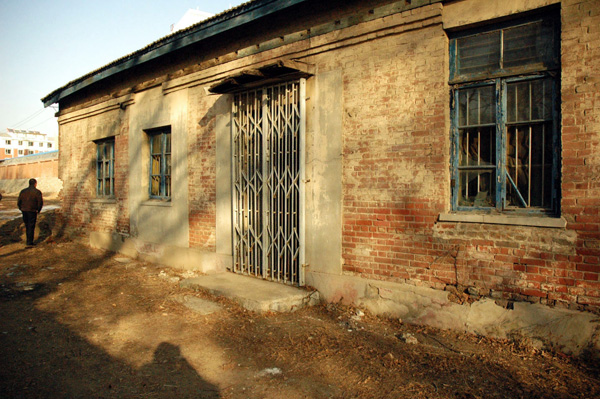 |
|
This redbrick house, seen in a photo taken in 2008, is the only remaining camp building. |
According to Li Jun, deputy director of the Liaoyuan Cultural Heritage Bureau, the camp was built in 1931 on the site of the former northern barracks of the Japanese Imperial Army. Before it was transformed into a POW camp, the Japanese used the complex as a base for the interrogation and torture of Chinese soldiers.
The buildings that housed the high-ranking POWs were on the east side of the barracks. The high walls were laced with live electric cables and searchlights were set up in the guard towers.
"The Japanese also raised more than 20 dogs that ran around the place. The local residents regarded it as a den of murderers, and rather than pass close by the gates, they always made a long detour," he said.
The news that a museum was being founded attracted the attention of historians and scholars from across China, who made great contributions to the protection of the site and helped to collect a vast amount of firsthand information.
When construction began in 2008, the workers discovered two hidden tunnels and many artifacts. "We found tools, such as shovels and picks, bowls, food cans, beer bottles, some arms such as rifles and bullets, and medical syringes. They have already been added to the list of first-class cultural relics in Jilin," Li said.
In 2010, Wei led a team to Wainwright's hometown in the US to interview his family and gather more information about the camp and the conditions in which the POWs were held. Wainwright's family donated a copy of his memoir, General Wainwright's Story, and some of his belongings to the museum. "As an important site in the global battle against fascism, the museum will become a patriotic education base to remind people of the brutality of war and the importance of peace," Wei said.
Despite his status as the highest-ranking POW, Wainwright was treated extremely badly. "Many times during my long rot in captivity, I wondered how the Japanese were capable of their gross inhumanities," he wrote in his memoir.
Although conditions were harsh in Liaoyuan, it wasn't the worst of the camps. The words most used by survivors of nearby Shenyang camp were "hunger", "cold", "disease" and "brutality", according to Jing Xiaoguang, director of the Shenyang 9.18 Historical Museum. Jing said one of the prisoners, Ralph Griffith from the US, told him that the food was so disgusting that even the pigs refused to eat it.
Hao Liansheng, 79, lived near Liaoyuan camp when he was a child.
"I was at primary school in 1945 and our teacher, who was Japanese, knew the guards in the camp. He once took us there to help pull up weeds. I still remember the Japanese soldiers carried guns and wore bullet belts around their waists," he told Liaoshen Evening News in 2010.
"The Japanese warned us not to wander around, but when we were leaving in the afternoon I saw several foreigners - Europeans - walking around not far away, with the Japanese standing close behind them. The men weren't wearing military uniforms, they wore suits, so I guessed they must be important officials," he said.
